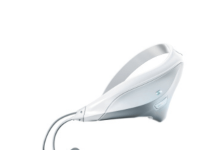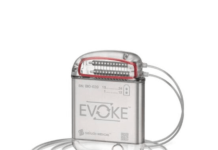Hyperfine, the health technology company that has redefined brain imaging with the first FDA-cleared AI-powered portable MRI system for the brain—the Swoop® system—announced FDA clearance of its most significant technological advancement to date. The clearance includes an entirely new portable MRI scanner powered by the proprietary Optive AI™ software. This new system delivers the highest level of image quality, functionality, and usability to date, unlocking a new brain imaging paradigm for clinicians and their patients.
Related: BiVacor wins FDA breakthrough nod for Total Artificial Heart
The next-generation Swoop® system incorporates learnings from five years of real-world experience across seven continents and numerous care settings. The new Swoop® system features innovations specifically engineered to deliver the highest signal-to-noise ratio, which, when paired with the Optive AI™ software, achieve exceptional image quality, including improved resolution, uniformity, and faster acquisition times. This new level of image quality has the potential to dramatically drive the adoption of the Swoop® system across multiple sites of care and clinical applications. The new Swoop® system also delivers a user and patient-centric design to accommodate a broad patient population—especially beneficial for pediatric, elderly, or anxious patients—making MRI more accessible for all. With the optimized user experience, the Swoop® system now, more than ever, empowers clinicians to acquire scans when and where it matters most.
“This next-generation hardware and the Optive AI™ software platform begin a new chapter for the adoption of AI-powered portable MRI. This clearance is the most significant innovation in the history of Hyperfine. We plan to launch the new Swoop® system across hospital and office settings in the US, and we believe the new Swoop® system performance will delight patients and providers, reduce the learning curve for users, and drive meaningfully faster adoption,” said Maria Sainz, President and CEO of Hyperfine.
Collaboration with leading portable MRI programs, including Jefferson Abington, has accelerated the development of the new system. These strong clinical partnerships have helped shape hardware and software refinements critical to clinical utility. As Jennifer Villa Frabizzio, MD, Neuroradiologist at the Radiology Group of Abington, noted, “This sleek, innovative redesign of the Swoop® system is a transformational advance for the emerging field of portable MR imaging. It improves patient comfort by accommodating a broader range of body types and increases efficiency by allowing technologists to reach patients more quickly. But the real breakthrough lies in how the hardware and software work together to deliver image quality and speed, which brings portable MRI into the realm of mainstream clinical practice.”
The new Swoop® system is being used in NEURO PMR, a Hyperfine-sponsored study examining the clinical utility of portable MRI in neurology offices. The two participating sites have reported very positive feedback from both users and patients so far. “Based on my extensive experience in the NEURO PMR study, I believe the new Swoop® system marks a remarkable advancement in image quality while maintaining an affordable and compact design,” said Dr. Laszlo Mechtler, Medical Director of Dent Neurologic Institute and principal investigator of the NEURO PMR study. “It is a compelling solution for neurology practices who want to offer on-site, cost-effective brain imaging to enhance patient care, convenience, and comfort.”
With this launch, Hyperfine will turn a long-held vision to transform access to MRI globally into a clinical reality. By combining powerful AI with a reimagined portable MRI platform, the company is redefining how—and where—brain imaging can be delivered. The new Swoop® system accelerates Hyperfine’s strategy to broaden adoption across a wide range of care environments, including critical care, emergency, and clinic settings in hospitals, neurology offices, and remote and rural care environments. It marks a pivotal step toward making high-quality brain imaging more accessible, efficient, and impactful wherever patients are.






